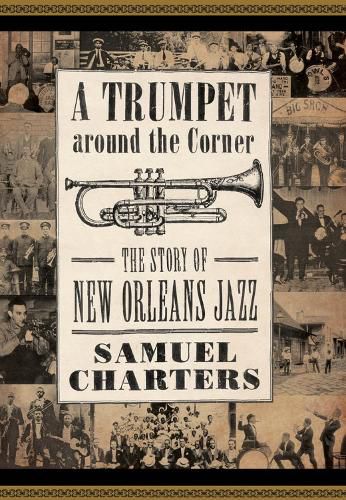Readings Newsletter
Become a Readings Member to make your shopping experience even easier.
Sign in or sign up for free!
You’re not far away from qualifying for FREE standard shipping within Australia
You’ve qualified for FREE standard shipping within Australia
The cart is loading…






This title is printed to order. This book may have been self-published. If so, we cannot guarantee the quality of the content. In the main most books will have gone through the editing process however some may not. We therefore suggest that you be aware of this before ordering this book. If in doubt check either the author or publisher’s details as we are unable to accept any returns unless they are faulty. Please contact us if you have any questions.
Samuel Charters has been studying and writing about New Orleans music for more than fifty years. A Trumpet around the Corner: The Story of New Orleans Jazz is the first book to tell the entire story of a century of jazz in New Orleans. Although there is still controversy over the racial origins and cultural sources of New Orleans jazz, Charters provides a balanced assessment of the role played by all three of the city's musical lineages--African American, white, and Creole--in jazz's formative years. Charters also maps the inroads blazed by the city's Italian immigrant musicians, who left their own imprint on the emerging styles.
The study is based on the author's own interviews, begun in the 1950s, on the extensive material gathered by the Oral History Project in New Orleans, on the recent scholarship of a new generation of writers, and on an exhaustive examination of related newspaper files from the jazz era. The book extends the study area of his earlier book Jazz: New Orleans, 1885-1957, and breaks new ground with its in-depth discussion of the earliest New Orleans recordings. A Trumpet around the Corner for the first time brings the story up to the present, describing the worldwide interest in the New Orleans jazz revival of the 1950s and 1960s, and the exciting resurgence of the brass bands of the last decades. The book discusses the renewed concern over New Orleans's musical heritage, which is at great risk after the catastrophe of Hurricane Katrina's floodwaters.
$9.00 standard shipping within Australia
FREE standard shipping within Australia for orders over $100.00
Express & International shipping calculated at checkout
This title is printed to order. This book may have been self-published. If so, we cannot guarantee the quality of the content. In the main most books will have gone through the editing process however some may not. We therefore suggest that you be aware of this before ordering this book. If in doubt check either the author or publisher’s details as we are unable to accept any returns unless they are faulty. Please contact us if you have any questions.
Samuel Charters has been studying and writing about New Orleans music for more than fifty years. A Trumpet around the Corner: The Story of New Orleans Jazz is the first book to tell the entire story of a century of jazz in New Orleans. Although there is still controversy over the racial origins and cultural sources of New Orleans jazz, Charters provides a balanced assessment of the role played by all three of the city's musical lineages--African American, white, and Creole--in jazz's formative years. Charters also maps the inroads blazed by the city's Italian immigrant musicians, who left their own imprint on the emerging styles.
The study is based on the author's own interviews, begun in the 1950s, on the extensive material gathered by the Oral History Project in New Orleans, on the recent scholarship of a new generation of writers, and on an exhaustive examination of related newspaper files from the jazz era. The book extends the study area of his earlier book Jazz: New Orleans, 1885-1957, and breaks new ground with its in-depth discussion of the earliest New Orleans recordings. A Trumpet around the Corner for the first time brings the story up to the present, describing the worldwide interest in the New Orleans jazz revival of the 1950s and 1960s, and the exciting resurgence of the brass bands of the last decades. The book discusses the renewed concern over New Orleans's musical heritage, which is at great risk after the catastrophe of Hurricane Katrina's floodwaters.